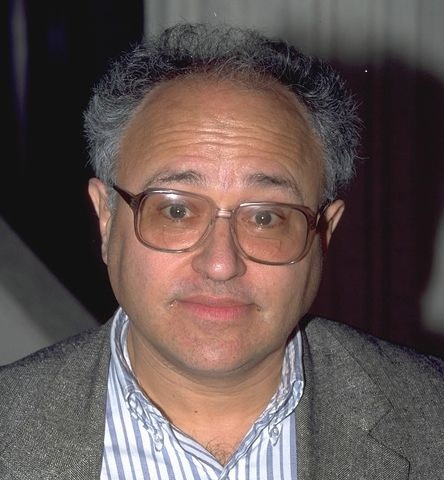This article is a part of the Free to Choose Symposium symposium.
I have long argued that the economic assumption of rationality is useful not because it is a complete and correct description of real world behavior but because it describes that part of behavior that is predictable. If half the time an individual takes the actions that best achieve his goals and half the time he acts at random, then modeling his behavior as rational with some random error probably does as good a job of predicting it as we can do. When dealing not with a single individual but with the aggregated affects of many individual actions, random actions will tend to cancel out, making the predictions of a rational actor model more accurate than they would be for a single actor. Further, in some but not all cases, the actors that most matter are precisely those selected for successful decisions in the past—successful speculators, for example, have more money to speculate with and so a larger effect on markets, than unsuccessful ones.
Behavioral economics offers an interesting and persuasive challenge to that argument. Its central claim is that at least some of the irrational actions are predictable, follow known patterns that can be determined by observation and experiment. I have, however, two reservations about the field. One has to do with it as an approach to creating economic theory, the other to its use in generating and defending policies.
The theoretical problem is that behavioral economics, at least as I have seen it done, lacks any unifying theory; it tells us that individuals are irrational in certain ways, but not why. It is hard to imagine an experiment that could refute the general approach, since the supporter can always come up with a new form of irrationality to explain the new data. Thus it risks degenerating into pure curve fitting, the sort of theory that does little more than summarize existing data and so tells us little that we do not already know. At most, one might refute a particular pattern of irrationality, which would then have to be revised into some new form that explained the anomaly.What behavioral economics needs is an explanation of why individuals are irrational in particular ways—ideally, one that also explains why, in other contexts and other ways, they are rational. An attractive candidate is evolutionary psychology. If humans are the product of Darwinian selection for reproductive success, our mental characteristics should be explainable as patterns of behavior that led to reproductive success in past environments. I have made one attempt along those lines.
My second reservation concerns behavioral economics as a source of policy arguments. Just as in the analogous case of market failure, there is a tendency to apply the theory asymmetrically, to take account of market failure or predictable irrationality in the regulatees but not the regulators.
Consider the case of social security. Hyperbolic discounting, the tendency to underestimate distant effects, implies that private individuals may fail to adequately provide for their old age, which is an argument in favor of forced savings. The same pattern, applied to governments and voters, suggests that while the force will be real, the saving is likely to be imaginary, with revenues that are supposed to provide benefits in the distant future being spent instead in the present, creating a trust fund filled with IOU’s.
Or consider the recent flap over intrusive TSA searches. The more unpleasant TSA makes the experience of flying, the more people choose to drive instead. Driving is, per mile, much more dangerous than flying. Radley Balko estimates the increased mortality from the 2002 requirement that all checked luggage be screened at about the equivalent of four fully loaded 737’s crashing each year. One explanation of why TSA weights the prevention of a successful airplane bombing highly enough to justify such costs comes from behavioral economics—the tendency to overestimate the importance of striking low probability events. A similar argument explains why regulation of new drugs is biased towards preventing low probability events such as the Thalidomide case at the cost of increased mortality from delays in introducing new drugs.
Finally, consider price control. The arguments for and against are very nearly the same whether we are considering a prohibition on price increases or a requirement of price decreases. The former is often popular and often implemented, the latter rarely. Arguably this reflects another pattern of predictatable irrationality: Status Quo bias. If a government with the power to impose price controls is likely to do so in response to political pressure coming from individually irrational behavior, that is an argument against giving governments the power to control prices.
A second problem is that both behavioral economics and the theory of market failure widen the range of defensible policy arguments, and the new arguments are likely to be used not for whatever policies are beneficial but for whatever ones are politically profitable. In an extended exchange on my blog with Robert Frank, I pointed out that the market failure argument he was offering, based on externalities associated with status, had a clear policy implication that he had ignored. Since, in his view, expenditures on elite education, whether in suburban high schools or private colleges, were largely producing status for the beneficiaries at a cost to those pushed further down the totem pole, the obvious implication was that instead of subsiding such education we should tax it. The exchange continued—but he never responded to that particular point.
Or consider the implications of behavioral economics for welfare policy. Looking at data on the poverty rate, one observes a striking anomaly. For two decades after the end of WWII, it was falling pretty rapidly. That fall ended about when the War on Poverty got fully implemented, programs staffed and funded. Since then the poverty rate has been roughly constant, increasing or decreasing with economic conditions.
The obvious explanation is that welfare programs make poverty less unattractive, and so reduce the incentive to get out of it. That argument is strengthened by behavioral economics. Given both status quo bias and hyperbolic discounting, someone who is poor is likely to underestimate the future benefits from the very considerable efforts needed to get out of poverty. Making poverty less uncomfortable makes it easier to do so. It follows that the deadweight cost of subsidizing the consumption of the poor is higher than implied by conventional economics, since the subsidy reduces their efforts not from a privately optimal level, at which the marginal loss to them from a reduction is zero, but from a level already suboptimal.
In conclusion, I view behavioral economics as an intriguing research project but not yet a full blown competitor to the conventional approach. As a basis for policy, I think it quite likely that it will do more harm than good.




